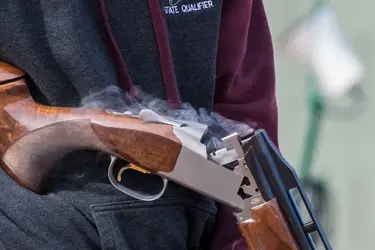@Derrel are you against BBF? For sports I find it to be a must. Actually it's the way my cameras are set up now. Did I have to train my thumb to work in connection with the index finger? Yes, but after a while it becomes second nature.
Most sports photographers that you will find use BBF for shooting.
I am against BBF for MOST continuous-action sports. For some scenarios, it makes sense.
The pro Nikons I am familiar with have a focus HOLD button right next to the Focus ON button.
Smoking cigarettes right after a meal has become second nature to millions of people.
Driving everywhere in 3rd gear is a great idea too. More power, Faster acceleration. Better torque.
MILLIONS of newbies love to shoot "at f/1.8", because
with the lens wide-open, you get that awesome bokeh. The internet is filled with stupid ideas that have become popularized by people on forums and YouTube. I think of the habit of automatic, habitual, constant, all-situation use of BBF as being just as dumb as advocating
"shooting wide-open all the time". Shooting "wide-open" is yet another internet-era practice followed by millions of people. Just because many people advocate something, does not make it the best course of action.
McDonald's would be America's best restaurant to eat at, and drinking soda pop at every meal, why both of those things would be the healthiest course of action if sheer numbers and popularity are what determine "the best course of action". I do not let internet-era and YouTube opinion determine what is actually the best operating procedure in a blanket way. At _some times_ BBF makes sense. As a matter of constant, standard operating procedure, it is a highly-flawed concept to people using high-level Nikon bodies, like the OP's D5.
Do you remember the somewhat famous Canadian sports shooter that used to post here a few years back. You know, the guy who had been sent to photograph two decades' worth of Olympic Games? His father was perhaps the most-famous Canadian sports shooter ever. He thought BBF was a dumb idea, for the same reasons I outline above. he wants the focusing to be initiated by the trigger. Every shot, every time, the trigger does the focusing. If you want to override, and lock, or hold, or retard acquisition of an new target, use the thumb button as an AF HOLD button.
I liken BBF to adding a second button to a rifle or pistol: you have the trigger, the sights, and then around 2003, you add a third button, the FIRE button...requiring yet another step. Aim (frame up the shot), hold the FIRE button (BBF), and then, pull the trigger.
I'm done arguing with people who do not understand the nuance of autofocusing on high-level, Nikon bodies. To anybody who wishes to ADD yet another step to getting a focused picture, go right ahead... add that addition un-needed step to every shot you want to shoot.




















